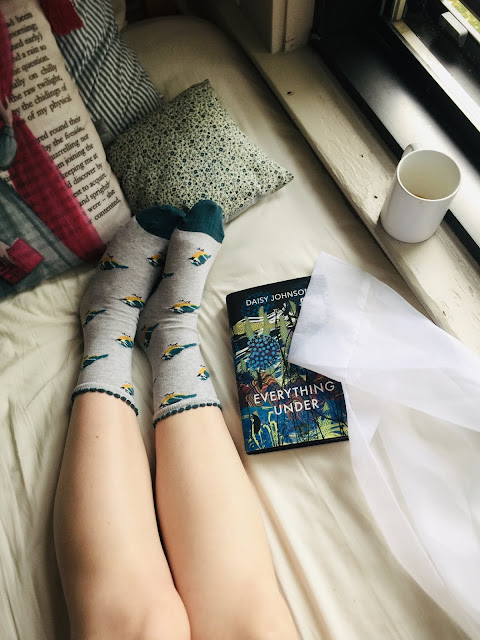Hiking Heathcliff’s Moors
A version of this article was published in the Wellesley UK Club newsletter.
Last fall, as I was preparing to go abroad for the spring semester of my junior year, many people asked me where I most wanted to go in Europe. I think they expected I would say Italy, or the Eiffel Tower, or Budapest. Instead, I enthusiastically told them that I wanted to go to the moors.
I’ve been dreaming about Britain’s moors since I was sixteen and reading my first Brontë novel. Wuthering Heights, Emily Brontë’s masterpiece of revenge and betrayal between two families, focuses heavily on the natural strangeness of Yorkshire’s desolate landscape. I loved the raw nature in Emily’s work and, perhaps more significantly, the little girl who appears first in the novel as a ghost. As the child Catherine Earnshaw grows into the married Catherine Linton, she longs for this ghost of her past who was “half savage and hardy and free.” In my favorite quote from the novel, Catherine passionately notes that she felt most herself “among the heather on those hills.” Her obsession with her topography mirrors her devotion to her childhood “twin” Heathcliff (as in, the “heath” on the “cliffs” of the moors) and, moreover, demonstrates her loss of freedom through the loss of her nature. In Wuthering Heights, I first noticed a literary pattern that has continued to fascinate me throughout my college years: the relationship between nature and the female narrative.
Emily’s insight on the intensity of human nature depends heavily on her knowledge of the wild terrain surrounding her home, the Parsonage in the Yorkshire town of Haworth. As I entered Wellesley, I soon learned that Emily was not the only Brontë forever marked by this rough but phantasmagorical landscape. I came across the moors again when Jane flees Rochester in Charlotte’s Jane Eyre, leading her to battle the violent hills as she slowly starves with only the moon to guide her to shelter. I felt their presence in Anne’s Tenant of Wildfell Hall as Gilbert Markham first creeps upon Helen Graham’s decayed Elizabethan manor, filled with overgrown animal-shaped hedges that look nightmarish to Gilbert even in the daylight. I saw them for the first time accidentally on a screen through To Walk Invisible, a Masterpiece Classics biopic about the Brontës that was filmed at the Haworth Parsonage, which is now a private museum. As I watched the miniseries with delight (and some criticism), I knew most certainly that I had to find my way to Haworth.
When I arrived at the Parsonage this April with the amazing help of the Wellesley UK Club, I first noticed the trees. They grew scattered across the graveyard that stood in front of the Brontë house, adding a damp, greenish hue to the gray sky. I knew they were out of place in some way, and it wasn’t until our fantastic tour guide Carole remarked on the landscape that I realized why: in all the old photographs, paintings, and recreations of the house in the mid-nineteenth century that I had seen, they weren’t there. They had been planted to improve the air of the town long after Emily, Anne, and their brother Branwell had died of consumption. I worriedly listened to the birds nesting in the trees, sadly wondering if these birdsongs weren’t the ones the sisters had heard growing up, if these paths weren’t the ones they had stepped on. Nature alerted me that I was in place but out of time, standing merely in a recreation of the past.
Nevertheless, the human remains of the Brontës proved to be nothing less than remarkable. I saw the dining room table that Anne had written Agnes Grey on; the kitchen where Tabby, the family housekeeper, had baked bread; the stairs where the Brontë children had made a raucous every time they played their odd and complicated imaginary games; the tiny glasses that Charlotte had worn; the bedroom Branwell set on fire; the couch where Emily had died. I excitedly read the sisters’ tiny handwriting on letters and diary papers that I had only read before in books. I reimagined the sisters in this house as every Brontë superfan probably has: bent over the writing desks, slamming dough into the kitchen counter, snuggling the dogs on the floor, leaving their books behind in violent but loving arguments with one another.
I didn’t feel Charlotte, Emily, and Anne in the house, though. I found them hiking on their moors.
Like the trees in front of the Brontë Parsonage, the moors behind it certainly have not maintained the untouched museum quality of the interior space. They have walking paths beaten down by the tourists and town members who travel them every day, and a gravel road zigzags across the rocky terrain for cars carrying tents and campers. They are surrounded by villages that can be seen from any high peak, evidence of the civilization that has formed in the last 150 years that the Brontës have been gone.
Yet, I saw the misty green and blue cliffs surrounding me and felt the wetness through the holes of my boots. I reached a wooden bench in the middle of these moors, and I started to cry. Here was the heath; here was the dirt. Here were the footprints of female narrators, buried under the millions of footprints that their beloved fans and inspired writers had left looking for them. Here I was, among the heather on their hills. Like seeds settled on hardened soil, they had vanished beneath the ground and grown into a tree that was and wasn’t them, scattering branches for “stray and stranger birds” like me to perch upon before soaring away.
I'll be writing a chapter of my senior thesis on bird imagery in Charlotte Brontë’s Jane Eyre. I'm incredibly grateful to the Wellesley UK Club for making my literary dreams possible.




Comments
Post a Comment